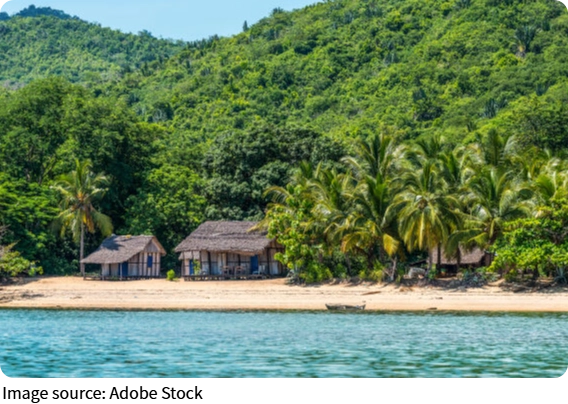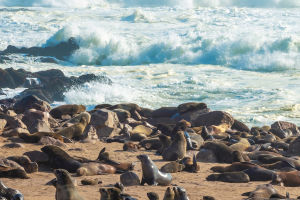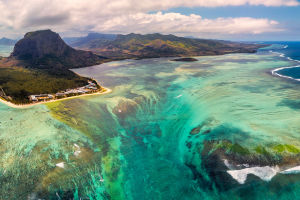Madagascar Wild Nature

Exploring Madagascar's protected natural areas offers Lykkers an unforgettable experience among unique landscapes and endemic wildlife.
Despite only a small percentage of the island's territory being protected, the country boasts numerous national parks and reserves, each showcasing remarkable biodiversity.
This article highlights five must-visit parks, providing essential details on what to expect, how to get there, key attractions, activities, opening hours, ticket costs, and accommodation options.
1. Andasibe-Mantadia National Park
Location and Access: Situated about 145 km east of Antananarivo, this park covers over 12,000 hectares of lush, humid rainforest at altitudes between 930 and 1,240 meters. It's one of the most accessible parks from the capital, making it ideal for short visits of two to three days.
What to See and Do: Andasibe-Mantadia is famous for its rich plant life, including large trees, orchids, medicinal plants, and lianas. It is home to 11 species of lemurs, including the Indri—the largest lemur species—and the elusive Aye Aye. Visitors can also spot various chameleons, including the large Calumma Parsoni, boas, frogs, and about 100 bird species.
Activities and Trails: Several walking trails range from 2 to 6 hours, plus occasional night walks to spot nocturnal wildlife. Trails are unmarked, so hiring a local guide is recommended for wildlife spotting and safe navigation.
Opening Hours and Tickets: The park is open year-round, best visited between March and December, with peak months in April, October, and November. Entrance fees are around $12 for adults and $6 for children. Guide fees depend on the route but typically start at about $7 for a two-hour walk.
Accommodation: Several lodges and hotels are located near the park entrance, offering convenient overnight options. Prices vary from budget-friendly to mid-range, averaging around $30–$60 per night.
2. Ranomafana National Park
Location and Access: Approximately 60 km northeast of Fianarantsoa, this expansive park covers 41,000 hectares of rainforest hills at elevations between 800 and 1,200 meters.
What to See and Do: The park shelters 29 mammal species, including 12 lemur species such as the crowned lemur and various small primates. Birdlife is abundant with about 100 species, alongside reptiles and butterflies. The flora includes giant bamboo clusters, orchids, ferns, and carnivorous plants.
Activities and Trails: Visitors can explore 2, 4, or 6-hour trails. Night excursions outside the park sometimes allow sightings of nocturnal lemurs and chameleons, which are more active after dark.
Opening Hours and Tickets: The park is open from April to December, with the best months being April, October, and November. Entrance and guide fees are similar to other national parks. Be aware that June to August nights can be quite cold.
Accommodation: Basic hotels and bungalows are available along the road to the nearby village, with prices typically ranging from $20 to $50 per night.
3. Isalo National Park
Location and Access: Located about 226 km southwest of Fianarantsoa, Isalo covers over 81,000 hectares characterized by sandstone formations sculpted by wind and water.
What to See and Do: The park features striking rocky canyons, natural pools perfect for swimming, and unique vegetation including the fire-resistant Uapaca Bojeri tree, pachypodium, and aloe species. Wildlife includes 3 lemur species and 55 bird species.
Activities and Trails: Several hiking options include routes to the natural pool and waterfalls, the Canyon des Singes, and the scenic Canyon des Rats. The "Isalo Window" rock formation is especially spectacular at sunset.
Opening Hours and Tickets: Open year-round except January and February. Ticket prices and guides follow standard park fees.
Accommodation: The nearby village of Ranohira offers a variety of accommodations, from simple guesthouses to upscale lodges like Le Jardin du Roy, with nightly rates from $30 to $120.
4. Ankarana Special Reserve
Location and Access: Roughly 100 km southwest of Diego Suarez, this reserve spans 18,200 hectares of unique karst limestone formations called tsingy.
What to See and Do: The dramatic "tsingy" pinnacles create a labyrinth of caves and canyons. Wildlife includes six lemur species, mongooses, over 80 bird species, geckos, chameleons, and crocodiles.
Activities and Trails: Guided tours explore the Petit Tsingy, extensive cave systems like the Andrafiabe, and trekking routes through the less-visited Grand Tsingy area. Safety harnesses are required on the more challenging paths.
Opening Hours and Tickets: Best visited from April to December. Tickets and guides are arranged at the reserve entrance.
Accommodation: Basic lodging is available nearby, with prices generally from $25 to $50 per night.
5. Reniala Private Reserve
Location and Access: Near Ifaty on Madagascar's southwest coast, Reniala covers a small area of the spiny forest ecosystem.
What to See and Do: The reserve features spectacular baobab trees, including one with a 12.5-meter diameter, rare birds such as the red-capped coua and the blue vanga, and endemic plants of the spiny forest.
Activities and Trails: Guided walks of approximately two hours provide an educational experience on the local flora and fauna.
Opening Hours and Tickets: Open year-round except January and February, with entrance fees supporting local community projects.
Accommodation: Nearby Ifaty offers resorts and bungalows suitable for relaxation, diving, and snorkeling along the coral reef, with prices ranging from $40 to $100 per night.
Practical Information for Lykkers
Permits and Guides: Entry permits are mandatory for most parks and are purchased at official offices near park entrances. Hiking trails are mostly unmarked and require local guides, whose fees vary by itinerary.
When to Visit: Most parks are best visited from April to December, avoiding the peak rainy months of January and February in many regions.
Travel and Transportation: Parks closer to major towns like Antananarivo or Fianarantsoa are accessible by road. More remote locations may require longer drives on rough tracks or combined transport modes.
Accommodation: Options near parks range from simple lodges and guesthouses to comfortable hotels and eco-lodges. Booking in advance is advised during peak travel seasons.

In Conclusion
Madagascar's parks and reserves offer Lykkers a spectacular journey through some of the world's most extraordinary natural habitats.
From lush rainforests and unique wildlife to dramatic sandstone canyons and spiny forests, these protected areas provide diverse experiences for nature lovers and adventurers. Planning a visit with proper permits, knowledgeable guides, and suitable accommodations ensures a rewarding exploration of the island's rich biodiversity and breathtaking landscapes.
-
 Happy Travels With KidsWondering how to make travel easier with children?
Happy Travels With KidsWondering how to make travel easier with children? -
 Seal City by the SeaThousands of seals. Endless noise. Unbearable cuteness. Can this chaotic, fuzzy paradise steal your heart—and your nose?
Seal City by the SeaThousands of seals. Endless noise. Unbearable cuteness. Can this chaotic, fuzzy paradise steal your heart—and your nose? -
 Le Morne's Sky Island TrailSteep, stunning, unforgettable. Climb to the clouds where ocean meets legend—will you conquer Mauritius' mightiest hike?
Le Morne's Sky Island TrailSteep, stunning, unforgettable. Climb to the clouds where ocean meets legend—will you conquer Mauritius' mightiest hike?